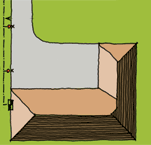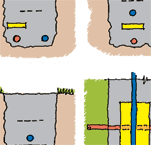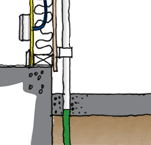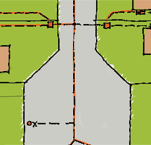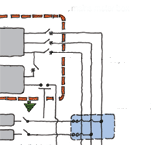Energy
Designing homes to conserve energy and use it efficiently, from sources that cause least environmental harm.
Mains or grid supply
Where supply lines are nearby, mains or grid-connected power is generally the most cost-effective option. In urban and many rural areas, supply is reliable and easily connected.
On this page:
- grid-connection costs
- mains cable sizing
- mains cable installation
- cables
- mains supply to multiple households.
Grid-connection costs
Current grid-connection costs vary considerably depending on energy requirements and distance to connection.
For example:
- a single-phase urban house with 20 metres of underground mains cable and connection to a pillar will have a cost of approximately $1,000
- a rural lifestyle block connection with a new or upgraded supply transformer installed and 800 m of 3-phase low voltage 400 volts (LV) or high voltage 11000 volts (HV) mains cable could cost over $100,000.
Reticulated power is generally installed as part of a development, but in some situations, the owner may be required to contribute to transformer installation and lines upgrading. In these situations, the ownership tends to remain with the lines company.
Mains cable sizing
Cable size depends on the maximum demand, the length and the current-carrying capacity of the cable, and any supply requirement by the company for a pilot cable to control a hot water control relay. (This is becoming less common as most supply companies use frequency-controlled or ripple relays.)
To size a mains cable for a domestic property:
- calculate the maximum demand of the house from AS/NZS 3000:2018.
- allow for possible future house and outbuilding loads.
- based on the maximum demand, select the size and type of cable in accordance with AS/NZS 3008.1.2:2017 Electrical installations – selection of cables.
Mains cable installation
New houses are typically connected to the mains supply by an underground cable while older houses more commonly have an aerial connection. Underground installation is preferred to reduce on-going maintenance, and for safety and aesthetics. In some areas, the cost for long runs may necessitate an overhead cable.
The service connection cost can be minimised by using a common trench for all incoming services, which may include water, gas, telecoms, sewerage, stormwater, gate power, camera and intercom, gate or driveway lighting and landscape lighting. Minimum separation distances between services in the trench and the minimum cover to cables are specified in AS/NZS 3000:2018.
When a common trench is used, the installation of the electrical supply system may need to be coordinated on site with a range of other trades.
Local or supply authority clearance, coverage and bedding requirements may differ from the standard in some areas.
Cables
Cables may be copper or aluminium. Aluminium cables tend to be large diameter, so longer cable runs are generally aluminium and shorter runs are copper.
Cables must be installed in accordance with one of the options given in AS/NZS 3000:2018:
- Mains cable for urban or suburban installations with cable runs up to 50 metres is often single-core 16 mm2 neutral screen or three-core 16 mm2 neutral screen.
- Mains cable for rural installations and cable runs up to 200 metres is 95 mm2 four-core aluminium with high impact sheathing.
Mains supply to multiple households
Multiple households, such as a retirement village or a small subdivision, may share a common mains cable. The mains supply from the grid is metered at the point of entry to the group of properties, then each household will have a check meter to measure individual power use. The advantage is there is only one supply connection charge, shared amongst all households.



